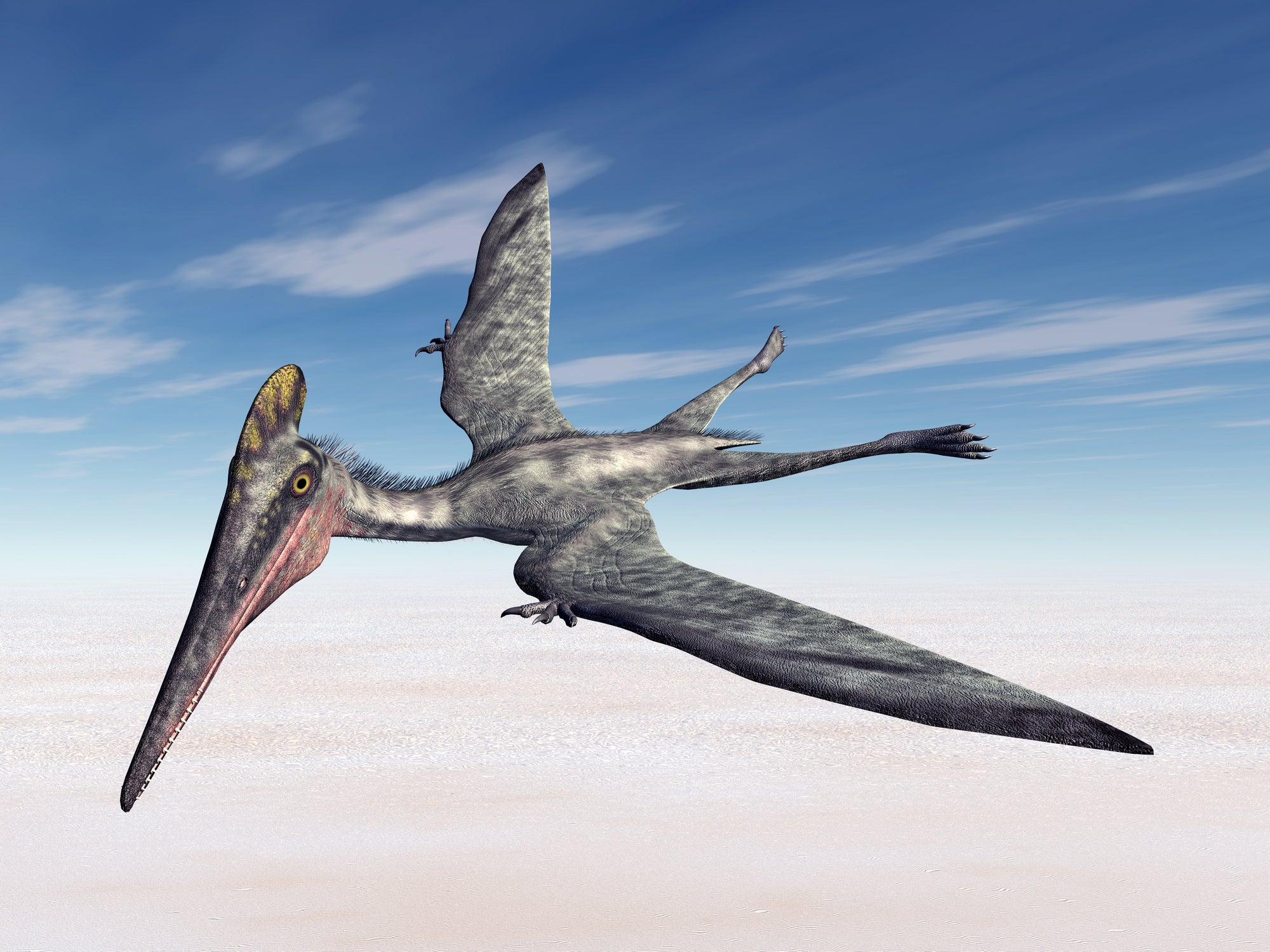Pterosaurs: Winged-reptiles gradually improved flying ability over millions of years, study finds
Research shows pterosaurs became twice as good at flying over existence

Your support helps us to tell the story
From reproductive rights to climate change to Big Tech, The Independent is on the ground when the story is developing. Whether it's investigating the financials of Elon Musk's pro-Trump PAC or producing our latest documentary, 'The A Word', which shines a light on the American women fighting for reproductive rights, we know how important it is to parse out the facts from the messaging.
At such a critical moment in US history, we need reporters on the ground. Your donation allows us to keep sending journalists to speak to both sides of the story.
The Independent is trusted by Americans across the entire political spectrum. And unlike many other quality news outlets, we choose not to lock Americans out of our reporting and analysis with paywalls. We believe quality journalism should be available to everyone, paid for by those who can afford it.
Your support makes all the difference.Winged-reptiles such as pterodactyls steadily improved their ability to fly over the course of millions of years to become “deadly masters of the sky”, according to a study.
Scientists from the Universities of Reading, Lincoln and Bristol used new methods to show how pterosaurs (a group of flying reptiles) became twice as good at flying over their existence.
The study, published in the journal Nature, showed that pterosaurs evolved to improve their flying ability over 150 million years before they went extinct around the same time as dinosaurs.
Researchers used fossil records combined with a new model of flight based on modern birds to measure the reptiles’ flight efficiency and to improve knowledge of their evolution over time.
The findings showed their evolution was caused by consistent small improvements over a long period rather than a sudden evolutionary burst which had previously been suggested.
“Pterosaurs were a diverse group of winged lizards, with some the size of sparrows and others with the wingspan of a light aircraft,” Professor Chris Venditti, lead author of the study, said.
“Fans of the movie Jurassic World will have seen a dramatisation of just how huge and lethal these creatures would have been.
“Their diet consisted mostly of other animals, from insects to smaller dinosaurs.”
Professor Venditti, an evolutionary biologist at the University of Reading, added: “Despite their eventual prowess in the air being well-known, the question of whether pterosaurs got better at flying and whether this gave them an advantage over their ancestors has puzzled scientists for decades.”
He said the new method allowed the research team to study long-term evolution “in a completely new way” and to explain how their ability changed.
Pterosaurs evolved from land-based animals and first emerged as flying creatures around 245 million years ago during the Early Triassic period.
The scientists’ models showed pterosaurs adapted their body shape and size to use 50 per cent less energy when flying over their 150 million-year history and they increased in mass by 10 times, with some eventually weighing more than 300kg.
However, one group of pterosaurs - azhdarchoids - did not appear to get any better at flying throughout their existence, according to the study.
“Until recently, paleontologists could describe the anatomy of creatures based on their fossils and work out their functions,” Professor Mike Benton, from the University of Bristol, said.
“It's really exciting now to be able to calculate the operational efficiency of extinct animals, and then to compare them through their evolution to see how efficiency has changed.”

Join our commenting forum
Join thought-provoking conversations, follow other Independent readers and see their replies
Comments